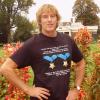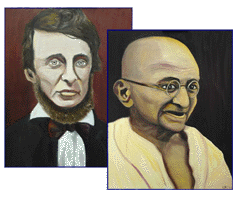"The whole aim of practical politics is to keep the populace alarmed (and hence clamorous to be led to safety) by menacing it with an endless series of hobgoblins, all of them imaginary." ~ H.L. Mencken
Count the Bullets: Blow Away All Arguments
Count the Bullets: Blow Away All Arguments
'I believe that no discovery of fact, however trivial, can be wholly useless to the race, and that no trumpeting of falsehood, however virtuous in intent, can be anything but vicious. I believe that all government is evil, in that all government must necessarily make war upon liberty.' ~ H.L. Mencken Regular readers of STR know me as an avowed JFK-9-11 conspiracy freak. Indeed, I devoutly believe the same sort of people who conspired to kill Kennedy'wealthy, well-protected elites, war lovers and imperialists--also conspired to mastermind and thus profit from the events of 9-11. Most of us who write for STR presently own guns, have shotguns, or received weapons training while in the US military. As a teenager, I owned shotguns and rifles, a semi-automatic .22 with 4x scope, was briefly a member of the NRA and an enthusiast at the local gun club. Later, I earned a sharpshooter ribbon with a weapon I had never shot before, the M-16, as a US Air Force trainee. Perhaps the greatest reason many Americans believe Lee Harvey Oswald acted alone and killed Kennedy is that a majority of Americans have never shot any guns, and certainly not a rifle with a scope. If the Warren Commission had been composed of unbiased shooters instead of senators and lawyers, the final verdict would likely have rejected the ludicrous assumption that Oswald acted alone. The 'trumpeting of falsehood, however virtuous in intent,' was indeed a vicious lie, supported by the government then and now. A Shooter Looks At The Shot Heard 'Round The World Recently I finished reading the definitive book (which I highly recommend) on the obviously, government-sanctioned, JFK assassination. Written from the unique perspective of a professional shooter, "Kill Zone: A Sniper Looks at Dealey Plaza," not only demolishes all the arguments of lone-assassin proponents, but examines the myriad reasons why Kennedy was killed. 'The reason I knew that Oswald could not have done it, was because I could not have done it,' said former US Marine sniper, Craig Roberts. Credited with numerous kills while serving in Vietnam , Roberts turned an objective eye on the shot heard 'round the world. After he visited Dealey Plaza, after viewing the so-called 'sniper's lair,' on the sixth floor of the book depository, and after staring at the large oak tree overspreading much of Elm Street, Roberts said, 'I walked away from the window in disgust. I had seen all I needed to know that Oswald could not have been the lone shooter.' But Roberts, a retired police investigator, wanted to know what did happen. Not content to dismiss the improbable feat, he delved into the crime from every angle. 'First, I analyzed the scene as a sniper . . . I looked at the engagement angles. It was entirely wrong'Here, from what I could see, three problems arose that would influence my shots. First, the target was moving away at a drastic angle to the right from the window, meaning that I would have to position my body to compete with the wall and a set of vertical water pipes . . . This would be extremely difficult for a right-handed shooter. Second, I would have to be ready to fire exactly when the target emerged past some tree branches that obscured the kill zone. Finally, I would have to deal with two factors at the same time; the curve of the street, and the high-to-low angle formula'a law of physics Oswald would not have known.' Not content with his own critical appraisal, Roberts turned to another, equally knowledgeable shooter. 'According to my friend, Gunnery Sergeant Carlos Hathcock, the former senior instructor for the US Marine Corps Sniper Instructor School at Quantico, Virginia, it could not be done as described by the FBI investigators.' 'Let me tell you what we did at Quantico,' Hathcock recalls. 'We reconstructed the whole thing: the angle, the range, the moving target, the time limit, the obstacles, everything. I don't know how many times we tried it, but we couldn't duplicate what the Warren Commission said Oswald did. Now if I can't do it, how in the world could a guy who was a non-qual on the rifle range and later only qualified 'marksman' do it?' Of course, sergeant Carlos Hathcock was only the most famous American military sniper in history, credited with a confirmed 93 kills. But apologists for a lone assassin, who continue to enjoy mainstream media sponsorship 40 years later, continue to argue that an average shooter like Oswald, using a decrepit, war surplus weapon, could have killed Kennedy. Case closed. Count The Bullets: Blow Away All Arguments But suppose we took a moment to examine the OBJECTS STRUCK rather than focus on the sound of gunfire witnesses claimed to have heard. Anyone who has seen the original film version of 'The Day of The Jackal' realizes that a sniper rifle equipped with a silencer and flash suppressor may be virtually soundless. 1. The first shot strikes the street, sending sparks behind Kennedy's car. Almost unanimous agreement that this first shot--unbelievably--misses everything. Was this Oswald's first and only diversionary shot from the sniper's lair? 2. A second shot strikes a curb near the railroad overpass, wounding bystander James Tague on the cheek. Another shot reportedly gouges a hole in a curb along the north side of Elm, which is hastily patched in an effort to cover the evidence. (Some of these snipers seem to be either rank amateurs or reluctant assassins).3. A third shot strikes a manhole cover and lodges in the grass. A group of policemen safeguard the site and an unidentified man removes the projectile and pockets it. A report of the find is recorded in newspaper accounts the following day and then denied by government officials. 4. A fourth shot strikes JFK in the back, well below the collar, four inches down from the nape of the neck and well to the right of his spine (John F. Kennedy Autopsy Photos). According to Dallas surgeons, the bullet did not enter deeply. 5. A fifth shot, from the front, strikes JFK in the throat. For the fourth and fifth shots to be connected, as all lone assassin apologists claim, Oswald would have needed to shoot Kennedy from ground level. Trajectory angles eliminate the possibility otherwise. Likewise, the shallow depth of the back wound precludes a rational argument for a through-and-through bullet wound. Noted pathologist, Cyril Wecht, in his 1993 book, Cause of Death, called the Warren report "absolute nonsense" and Specter's single-bullet theory "an asinine, pseudoscientific sham at best." 6. A sixth shot strikes the windshield of the limo, penetrating the glass. "The presidential limousine, which had a bullet hole in the windshield, witnessed by two Dallas police officers, Sergeant Stavis Ellis and Patrolman H.R. Freeman, who saw it in the parking lot of the emergency room at Parkland, and by journalist Richard Dudman--made by a bullet from the front...noted the hole 'just left of center' in the windshield," wrote Craig Roberts in Kill Zone. "According to Ellis, it was not chipped glass at Parkland he saw. 'You could put a pencil through it.'" 7. A seventh shot strikes the chrome trim strip of the limo's windshield. Arguably, this could well have been a fragment since the projectile did not penetrate the light metal. Gerald Posner, writing in Case Closed, wrote that over 60 grams of fragments were recovered from inside the limo. That is a hell of a lot of fragments. 8. An eighth shot strikes a sign along Elm. "The freeway sign, which had a bullet hole through it that came from the direction of the Grassy Knoll, quickly disappeared," said former sniper, Roberts. 9. A ninth shot strikes Texas Governor John Connelly. Lone assassin apologists, like Arlen Specter, John McAdams, William Manchester and Gerald Posner, true believers in magic bullets and lapses in time, short on common sense, gunmanship, and trajectory angles, claim that a single shot wounded Kennedy and Connelly. Due to trajectory angles from the sixth floor--approximately 17 degrees, depending on the placement of the limo on the street below--a bullet entering and exiting Kennedy would strike Connelly in the lower left hip, if it hit him at all. 10. A tenth shot. The fatal shot to the brain of Kennedy--and a mortal blow to the republic. "There was no question about it; John F. Kennedy had been shot from the right front," said veteran sniper Roberts. "How in the world could anyone look at that film and say that the fatal head strike had come from the rear? The so-called experts . . . had obviously never served in combat, where witnessing high-velocity bullet strikes was commonplace." So let us count the OBJECTS STRUCK. (1) street (2) curb (3) manhole cover (4) JFK's back (5) JFK's throat (6) windshield (7) trim strip (8) street sign (9) Connelly (10) JFK's head. Additionally, we heard reports of a shot striking a curb along Elm, which was hastily covered up. Could Oswald--according to the Lone Assassin Theory--have struck all of these objects in six seconds? Not unless he was armed with an automatic rifle and a dozen bullets. And so the fallacy of three shots doing all this damage, may join all the other fallacies perpetrated by the sinister enemies of the republic. As Mencken said, "All government is evil, in that all government must necessarily make war upon liberty." Thus, while the gloves of government control the reins of propaganda, the evident truth will forever be denied, suppressed, or distorted by highly paid scribes like Posner, and highly placed government lackeys like Specter. Ten shots to the brain of the republic--Count 'em!








 Reprint Rights
Reprint Rights